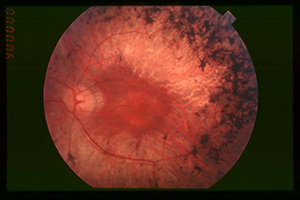 |
|
“The bigger the tooth, the bigger area for chips to develop and, therefore, the more force the animal can produce.” |
Were our early mammalian ancestors vegetarians, vegans, or omnivores. It’s difficult for anthropologists to determine the diet of early mammalians because current fossil analysis provides too little information. But a new method that measures the size of chips in tooth fossils can help determine the kinds of foods these early humans consumed.
Professor Herzl Chai of Tel Aviv University’s School of Mechanical Engineering, in collaboration with scientists from George Washington University and the U.S. National Institute of Standards and Technology (NIST), has developed an equation for determining how the size of a chip found in the enamel of a tooth relates to the bite force needed to produce the chip. With the aid of this information, researchers can better determine the type of food that animals, and early humans, could have consumed during their lifetimes.
Teeth are the only relevant fossils with staying power, Prof. Chai said. Made of hard, mineralized material, teeth from animals that are thousands of years old remain relatively intact. Teeth that display a greater number of large chips indicate that animals like our early ancestors were consuming harder foods such as nuts, seeds or items with bones. A lesser amount of small chips demonstrates that the animal’s diet more likely consisted of softer foods, such as vegetation. Prof. Chai’s findings were recently reported in the journal Biology Letters.
Joining anthropology and mechanical engineering
In the recent study, Prof. Chai combined his mechanical engineering background with the expertise of anthropologists at George Washington University and material scientists at NIST to develop a simple equation to predict the maximum bite force used to create a tooth chip. The equation correlates well with a commonly used equation from jaw mechanics—a more complex approach for determining the maximum bite force an animal can deliver.
Drawn from “fracture mechanics,” concerned with the formation of cracks in brittle materials, Prof. Chai’s equation takes into account the dimensions of the chip—its distance from the edge of the tooth—and from there solves for the bite force required to have made the chip. The maximum force an animal can apply, according to Prof. Chai, relates to the thickness of the enamel and the size of the tooth itself.
“The bigger the tooth, the bigger area for chips to develop and, therefore, the more force the animal can produce,” he said.
The team surveyed tooth fossils from many types of mammalians, including six hominids, gorillas and chimpanzees.
We are what we eat
A tooth chip is a permanent signature of consumption, Prof. Chai said. His method demonstrates that the probable food sources of a given animal can be determined from a small number of well-preserved teeth. The fossils used for this particular study were widely available at museums. This is an improvement over previous methods, which relied solely on jaw mechanics and required an almost complete skull to determine eating habits.
This moves researchers one step closer toward grasping the dietary habits of early mammalians. Although the study of tooth chips cannot, thus far, reveal exactly what food produced the chip, it allows researchers to determine a range of foods, providing valuable information about the animal’s life that other methods tend to miss.
 |











